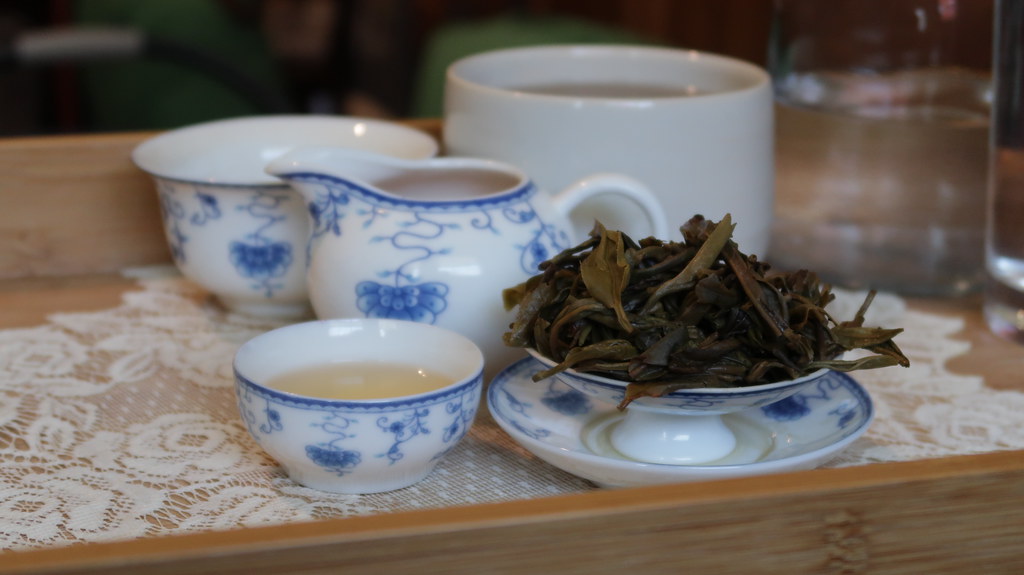Hallowe’en might be over, but I’m still in the spooky season mood, so what better tea than to brew than the most intriguing one from the Tea Thoughts Countdown to Halloween box? This was day eight’s gift and was the perfect tea to ring in the Hallowe’en season. Witch’s Broom from the Ohio Tea Co. is a raw puerh tea that is sold as a maocha, or loose leaves, and is so named because the long, large leaves (similar to a Tai Ping Hou Kui) look like besoms or brooms.
I decided to use MyTeaPal to brew because I was curious how it did with a more focused tasting, including notes, which I hadn’t tried yet, plus I seem to have misplaced my tea-tasting notebook. I brewed 5g of dry leaf in my 150-ml porcelain pot from Bitterleaf Teas with 190F water, as recommended by the package.
Immediately upon taking out the leaves, I noticed an earthy aroma, which only became more pronounced when I put them into the warmed pot. I did rinse them, as I tend to do with puerh, and noticed a damp earth and fragrant wood aroma on the wet leaf. I did my first infusion for ten seconds, after which, the liquor was very light in flavor, with hints of licorice and wood smoke.
The second infusion, which was for fifteen seconds, yielded a more pronounced juicy mouthfeel and smooth texture. The woody sweetness persisted, along with a stronger smoke note after the tea had been allowed to cool for a few minutes. The third infusion, for twent seconds, yielded a lighter flavor, though more smoke in the aromas. I was impressed by the utter lack of bitterness in this tea. Interestingly, while the packet says that this tea is aged for five years, the website says that the tea is from 2001, so it’s unclear just how long it has aged. My naive tastebuds suggest that the longer time might be correct.
On the fourth infusion, for thirty seconds, the leaf aroma seemed to be fading, but the texture was still smooth and juicy, with a slight fruity tang on the flavor, along with that subtle, but distinct, smoke flavor note. It’s interesting because this isn’t the kind of smoke note that would be on a smoked tea, but you can tell that there is some kind of smokiness to it, like when you sit near-ish to a campfire and still have some linger smoke aroma on your clothes, even after they’ve been airing overnight. In the puerh class I took with Victoria from MeiMei Fine Teas, she said that the smoke notes in puerhs usually come from the way that the teas are processed at the kill green stage, which is sometimes done in woks over wood fires, causing the leaves to pick up that subtle smokiness.
At the fifth infusion, for forty-five seconds, I noticed the flavor fading, but it still had such a nice mouthfeel that I was still enjoying the tea. That was the same for the sixth infusion, for a minute, so I decided to end the formal tasting there, though I might continue enjoying this tea throughout the day.
I will say, the shape of the leaves, and the little I know about the tea culture in the rural regions where puerhs were historically produced, suggests that this tea might be better enjoyed grandpa-style. Sadly, this does not lend itself well to a formal, note-taking tasting session, but I will likely try it in the future. The fact that this tea showed no bitterness seems promising for brewing it grandpa-style.
NB: Nothing to disclose. If you are interested in collaborating with me, please read my collaboration information for more details.


